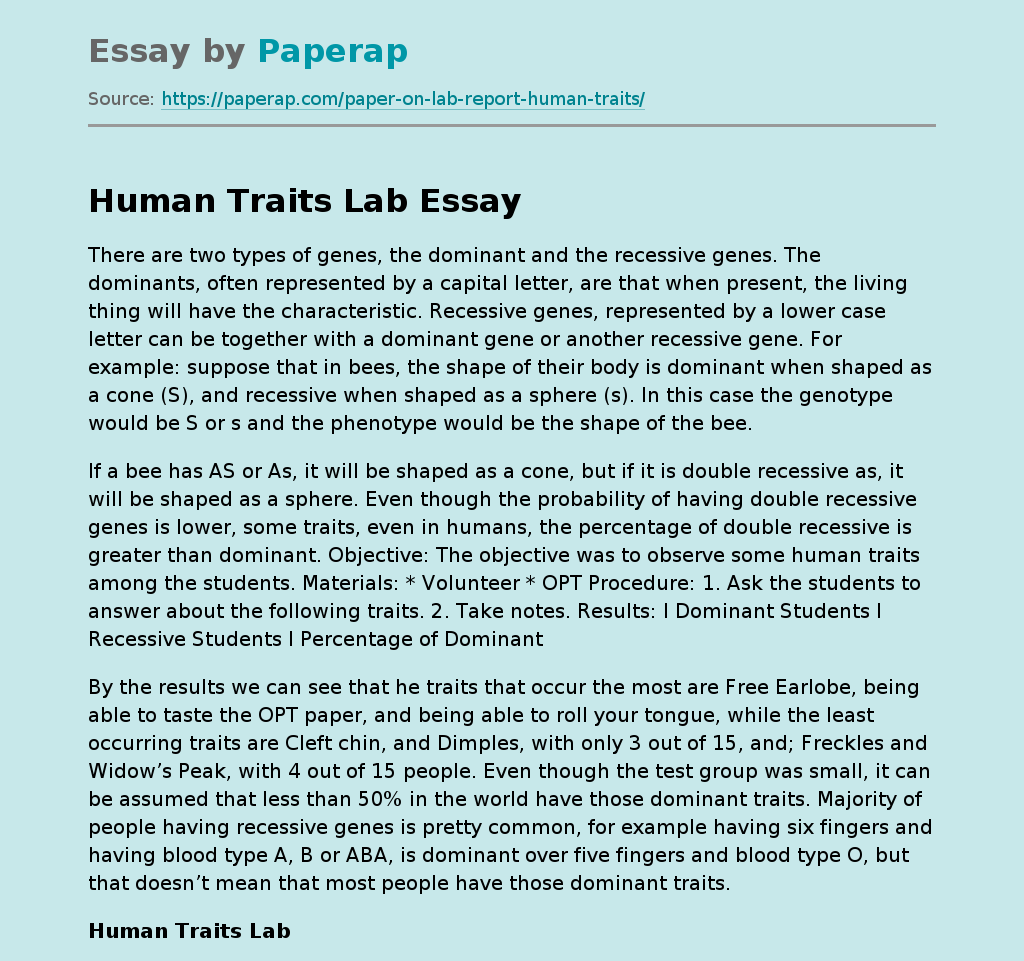There are two types of genes, the dominant and the recessive genes. The dominants, often represented by a capital letter, are that when present, the living thing will have the characteristic. Recessive genes, represented by a lower case letter can be together with a dominant gene or another recessive gene. For example: suppose that in bees, the shape of their body is dominant when shaped as a cone (S), and recessive when shaped as a sphere (s). In this case the genotype would be S or s and the phenotype would be the shape of the bee.
If a bee has AS or As, it will be shaped as a cone, but if it is double recessive as, it will be shaped as a sphere. Even though the probability of having double recessive genes is lower, some traits, even in humans, the percentage of double recessive is greater than dominant. Objective: The objective was to observe some human traits among the students.
Materials: * Volunteer * OPT Procedure: 1. Ask the students to answer about the following traits. 2. Take notes. Results: I Dominant Students I Recessive Students I Percentage of Dominant
By the results we can see that he traits that occur the most are Free Earlobe, being able to taste the OPT paper, and being able to roll your tongue, while the least occurring traits are Cleft chin, and Dimples, with only 3 out of 15, and; Freckles and Widow’s Peak, with 4 out of 15 people. Even though the test group was small, it can be assumed that less than 50% in the world have those dominant traits.
Majority of people having recessive genes is pretty common, for example having six fingers and having blood type A, B or ABA, is dominant over five fingers and blood type O, but that doesn’t mean that most people have those dominant traits.
Human Traits Lab
Human Traits Lab. (2019, Dec 05). Retrieved from https://paperap.com/paper-on-lab-report-human-traits/

